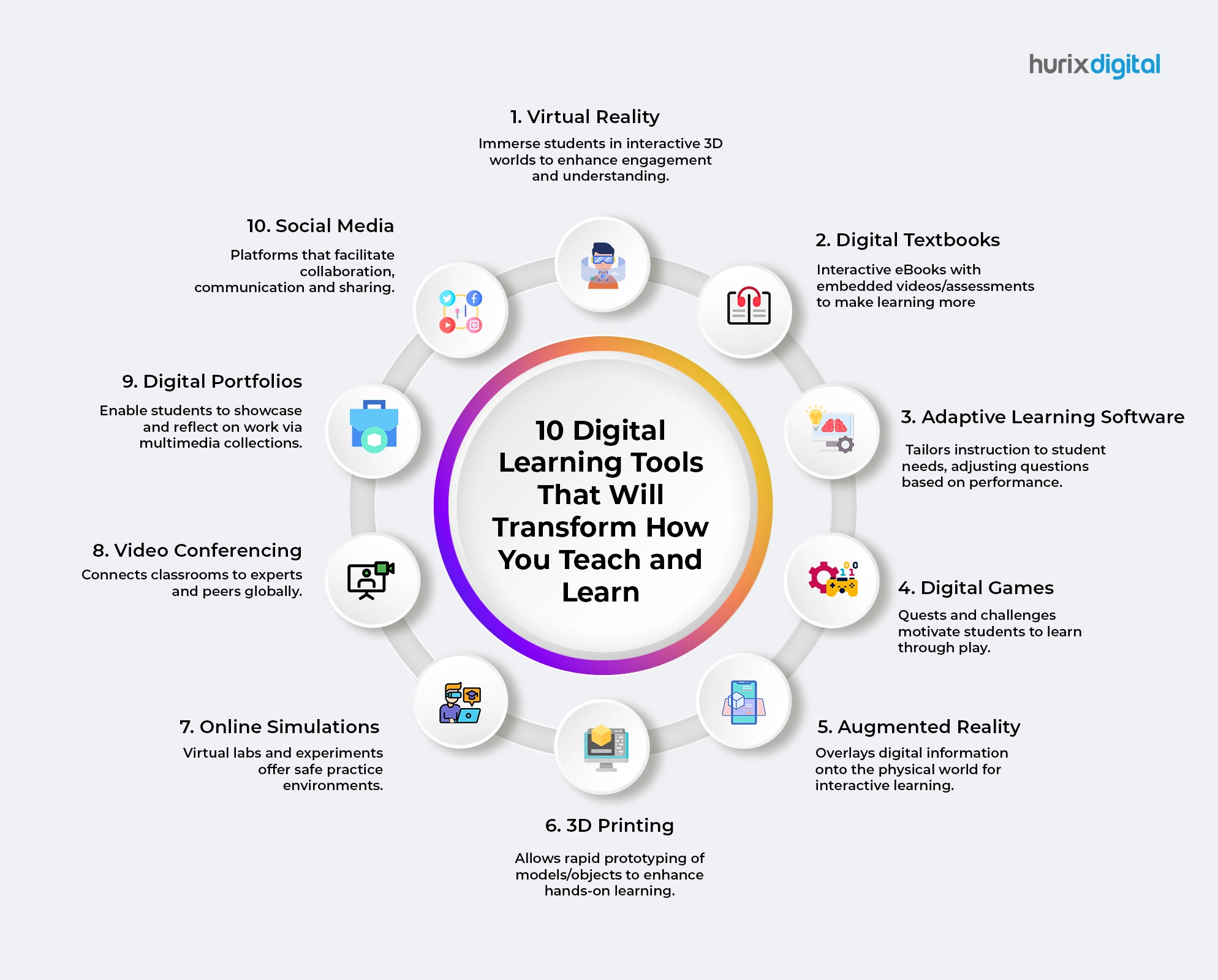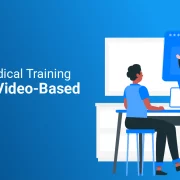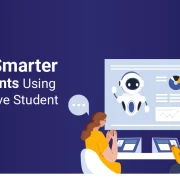Technology is playing a crucial role in modern education, making learning more engaging and accessible. Digital learning tools provide innovative ways to teach, collaborate, and assess student progress while enhancing overall learning experiences.
These tools help educators personalize instruction, encourage active participation, and create interactive lessons that cater to different learning styles.
Interested in implementing these digital platforms in your school? Explore how Hurix Digital can help to transform your classrooms. Contact us now.

Why Digital Learning Tools Matter
Integrating technology into education has several benefits:
- Enhanced engagement – Interactive tools keep students interested and motivated.
- Flexible learning options – Students can access lessons anytime, anywhere.
- Better collaboration – Digital platforms connect students and teachers beyond physical classrooms.
- Data-driven insights – Educators can track performance and adjust teaching strategies accordingly.
Key Digital Learning Tools That Improve Education
1. Virtual Reality (VR) for Immersive Learning
VR provides a hands-on experience by simulating real-world scenarios. Subjects like history, science, and engineering become more engaging when students can visualize complex concepts in a 3D environment.
2. Adaptive Learning Software for Personalized Education
These tools adjust lesson difficulty based on a student’s performance. By identifying strengths and weaknesses, the software provides tailored exercises, ensuring an effective learning experience.
3. Digital Games for Interactive Learning
Gamification makes learning fun. Quizzes, challenges, and rewards encourage students to participate actively, making complex subjects easier to understand.
4. Augmented Reality (AR) for Visual Learning
AR overlays digital content onto the real world, helping students explore models of the human body, space, or historical sites in an interactive way.
5. Online Simulations for Practical Training
Simulated labs and experiments allow students to practice safely in a virtual environment before applying knowledge in real-life situations.
6. Video Conferencing for Remote Learning
Online classrooms connect students and experts globally. Live discussions, Q&A sessions, and guest lectures make learning more interactive.
7. Digital Portfolios for Student Growth Tracking
Students can store, showcase, and reflect on their work using digital portfolios. This helps them track progress and build a strong academic profile.
8. 3D Printing for Hands-On Projects
Students can design and create models for engineering, architecture, and biology, enhancing their problem-solving skills through practical application.
9. Social Media for Educational Collaboration
Teachers and students can use online communities to share ideas, resources, and feedback. Platforms like discussion forums enhance communication.
How to Choose the Right Digital Learning Tools
When selecting tools for education, consider:
✔ Ease of use – Simple interfaces make tools accessible for all learners.
✔ Compatibility – Ensure tools work across multiple devices and platforms.
✔ Student engagement – Choose tools that encourage participation.
✔ Data security – Protecting student information is essential.
Final Thoughts
Digital learning tools enhance education by making lessons interactive, engaging, and accessible. From VR simulations to adaptive learning software, these technologies help create a dynamic learning environment that benefits both students and educators.



